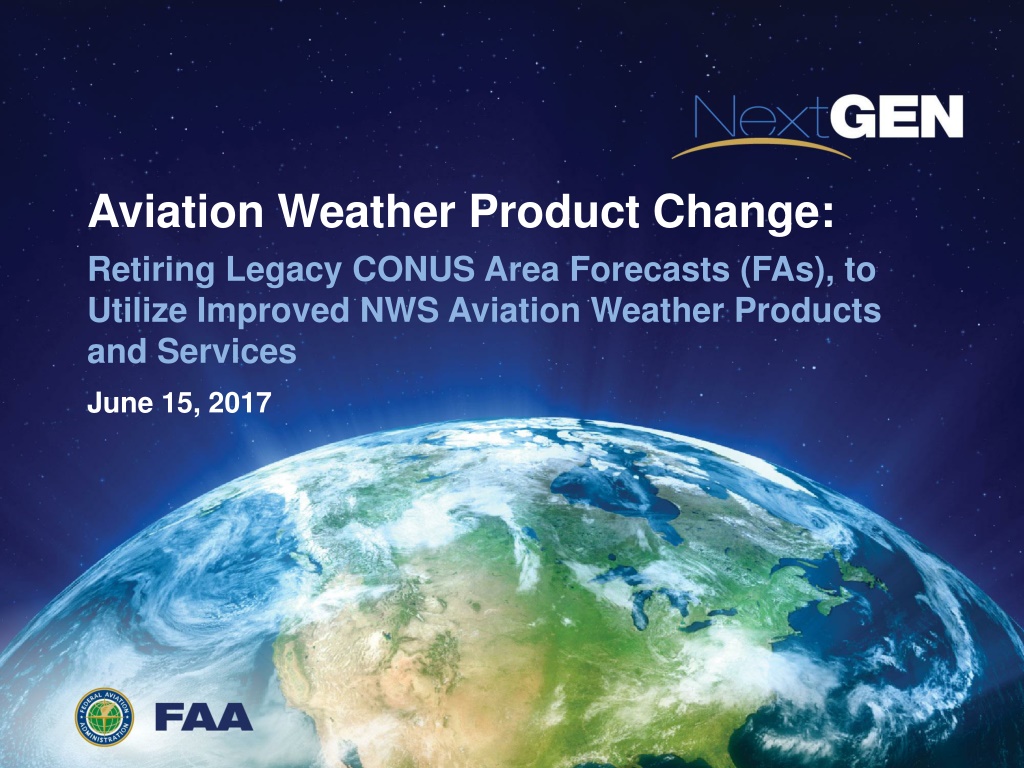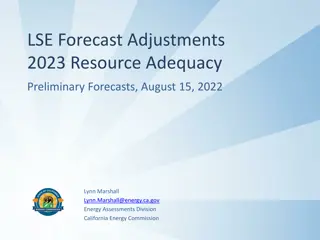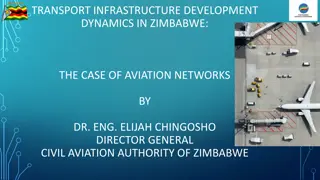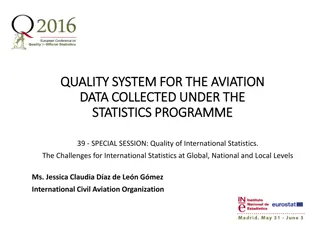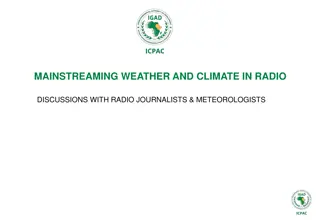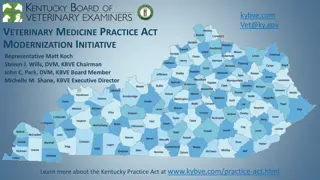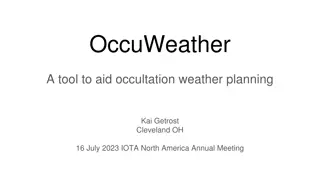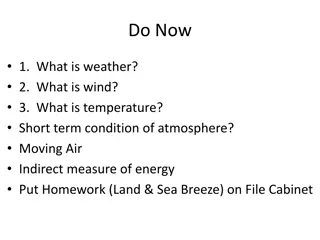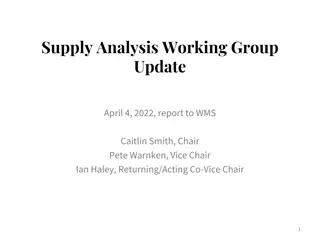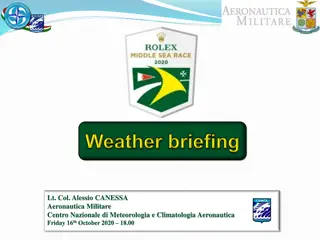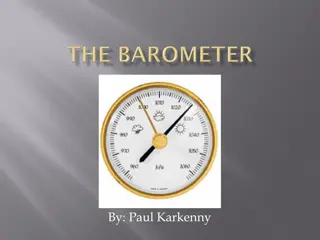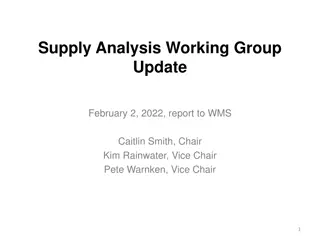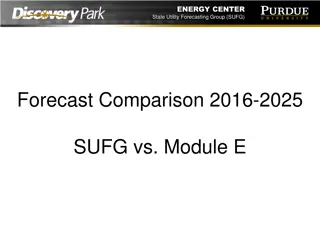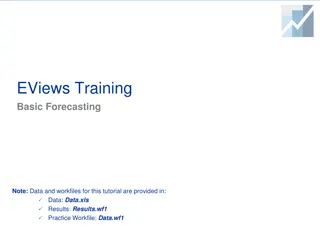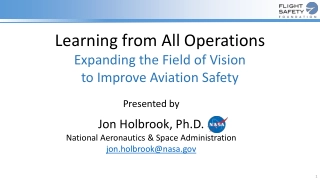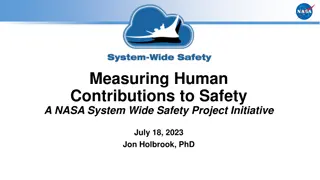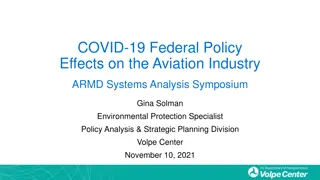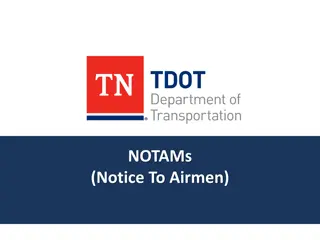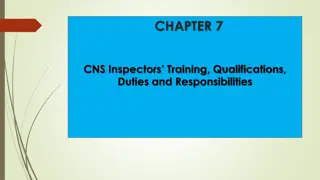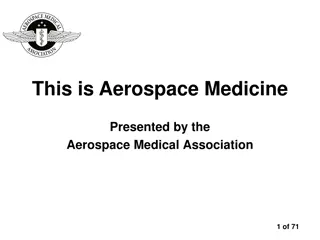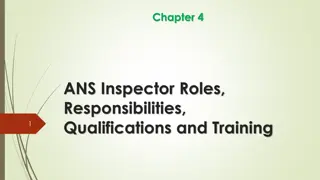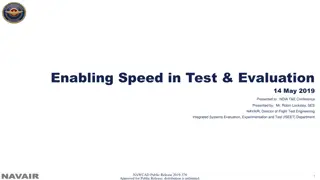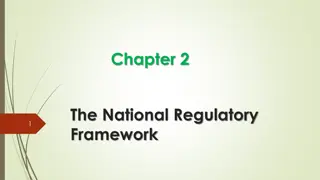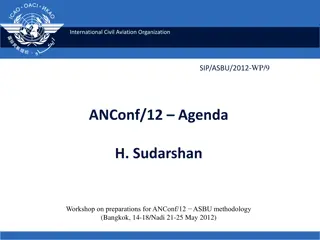Transition of Legacy CONUS Area Forecasts in Aviation Weather Modernization
On June 15, 2017, the National Weather Service announced a transition plan to retire legacy CONUS Area Forecasts (FAs) and adopt improved aviation weather products and services. The transition period will last three months, with full implementation expected by October 10, 2017. The goal is to enhance aviation weather information for pilots by focusing on digital and graphical forecast products while discontinuing outdated FA formats. The change aims to streamline information, improve accuracy, and better serve end-users in the aviation community.
Download Presentation

Please find below an Image/Link to download the presentation.
The content on the website is provided AS IS for your information and personal use only. It may not be sold, licensed, or shared on other websites without obtaining consent from the author. Download presentation by click this link. If you encounter any issues during the download, it is possible that the publisher has removed the file from their server.
E N D
Presentation Transcript
Aviation Weather Product Change: Retiring Legacy CONUS Area Forecasts (FAs), to Utilize Improved NWS Aviation Weather Products and Services June 15, 2017
Content Overview of the Change Aviation Weather Modernization Why the Area Forecast? Implementation Milestones Graphical Forecasts for Aviation (GFA) Tool Contacts for Questions or Comments
Overview of the Change On 10 July 2017, a transition period of three (3) months, aimed at ensuring a smooth transition for aviation end- users, will begin. During this time, users will have continued access to legacy FAs while being encouraged to consult the improved aviation weather products and services On 10 October 2017, the National Weather Service will cease production of six (6) legacy Areas Forecasts (FAs) covering the contiguous United States (CONUS) FAs for Hawaii, Alaska, the Caribbean, and the Gulf of Mexico remain unaffected at this time. Any potential changes to FAs outside the CONUS will be communicated separately.
Aviation Weather Modernization Many NWS aviation weather products are decades old, with little change in format To address this issue, FAA and NWS have undertaken a joint review of weather information produced by NWS for aviation purposes Primary goals of the review, include: Improving NWS products in-support of aviation weather; Increasing emphasis on digital products and identifying opportunities to digitize legacy NWS products and services; Identifying and removing products and services with duplicative information; Identifying and removing products and services of limited utility to aviators; and Focusing the activities of NWS forecasters, in order to maximize operational benefit(s). 4
Why the Area Forecast? The joint-agency working group recommended the FA be retired in- favor of existing, more-modern digital and graphical forecast products that provide improved weather information to pilots Limitations of the FA identified by the working group include: Unwieldy geographical coverage Strict character limitation (legacy teletype requirement) Prohibition on describing IFR conditions (reserved for SIGMETs and AIRMETs) Update rates significantly less than other, more-modern products and services While the FA met aviation weather information needs for many years, NWS today provides equivalent (or better) information through a number of alternative products Retiring the FA allows the effort of NWS forecasters to be focused on maximizing operational benefit(s) to aviators and other end-users Transitioning to more-modern digital and graphical forecasts will provide improved weather information to decision-makers 5
Implementation Milestones The joint-agency working group completed an extensive analysis, mapping underlying weather information elements in the FA to more- modern NWS aviation weather products and services With few exceptions, the individual weather information elements are available elsewhere in better temporal and/or spatial resolution Improved NWS aviation weather information was compiled into a Graphical Forecasts for Aviation (GFA) Tool, and made available to aviation end-users and Flight Service briefers Multiple Safety Risk Assessments addressing the change were completed A transition period of three (3) months, aimed at ensuring a smooth transition for aviation end-users, will commence 10 July 2017 On 10 October 2017, the National Weather Service will cease production of the six (6) legacy FAs covering the CONUS 6
Graphical Forecasts for Aviation Tool The Graphical Forecasts for Aviation (GFA) Tool can be accessed via the following URL: https://www.aviationweather.gov/gfa
Questions or Comments? FAA Contact Michael Pat Murphy Policy & Requirements Branch NextGen Aviation Weather Division Federal Aviation Administration (202) 267-2788 michael.murphy@faa.gov NWS Contact Kevin Stone Aviation and Space Weather Services Branch Analyze, Forecast and Support Office National Weather Service (301) 427-9363 kevin.stone@noaa.gov 8
NOAA NOAA
